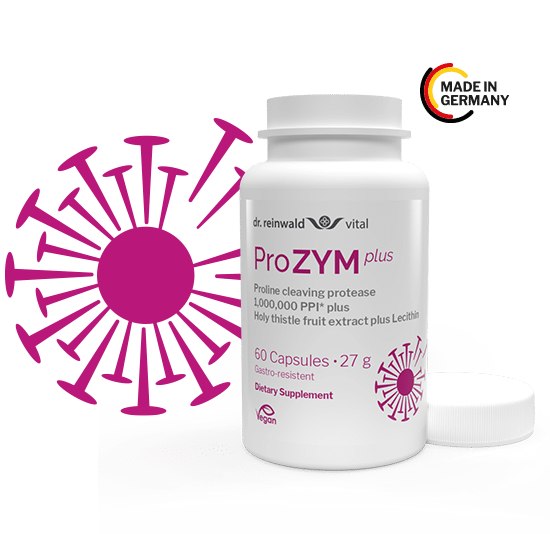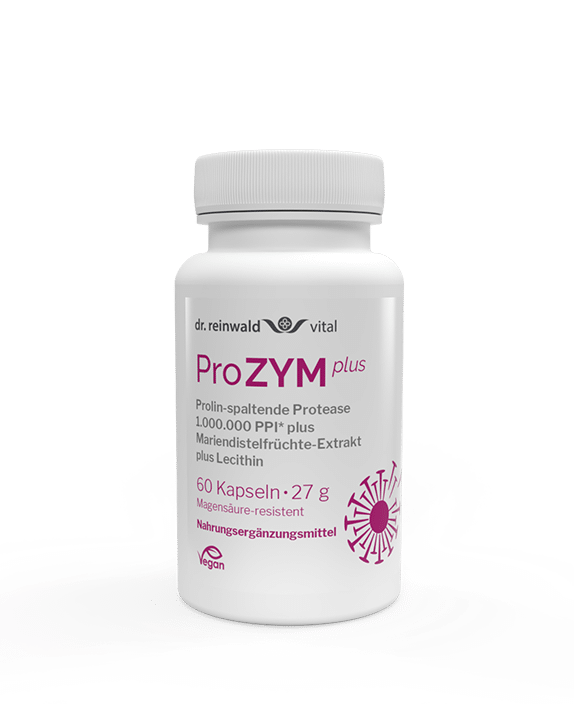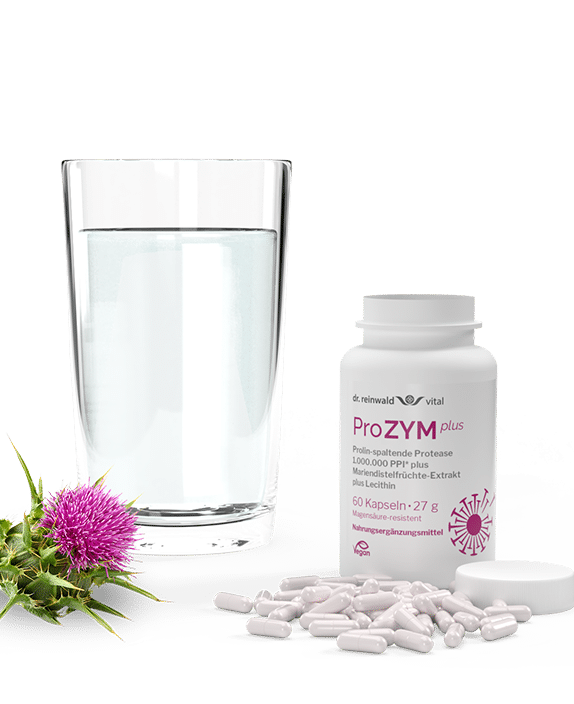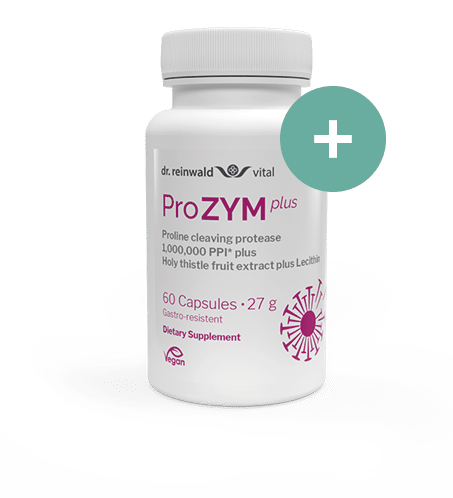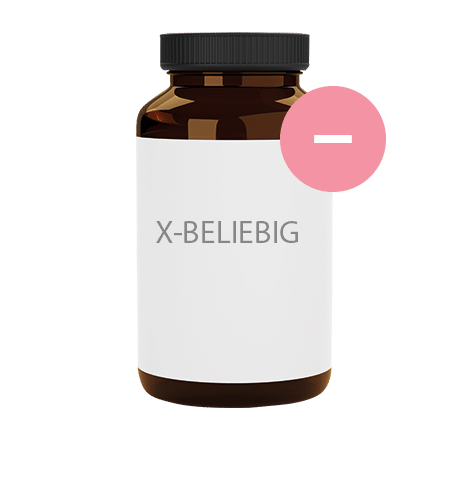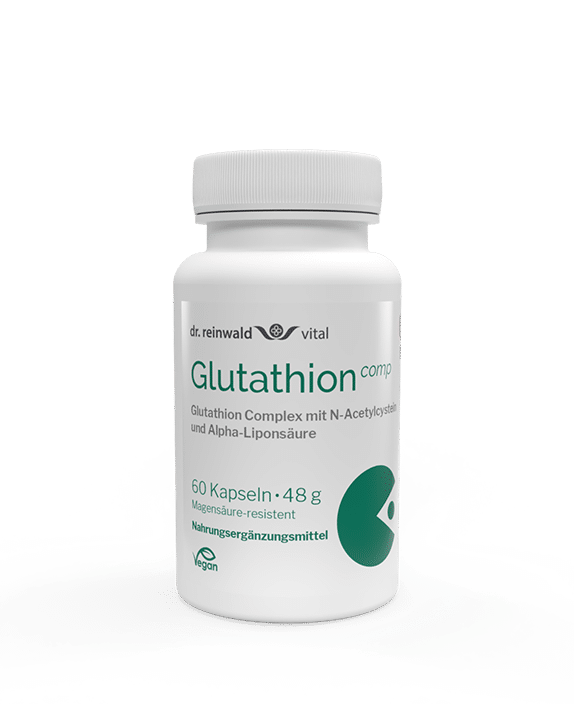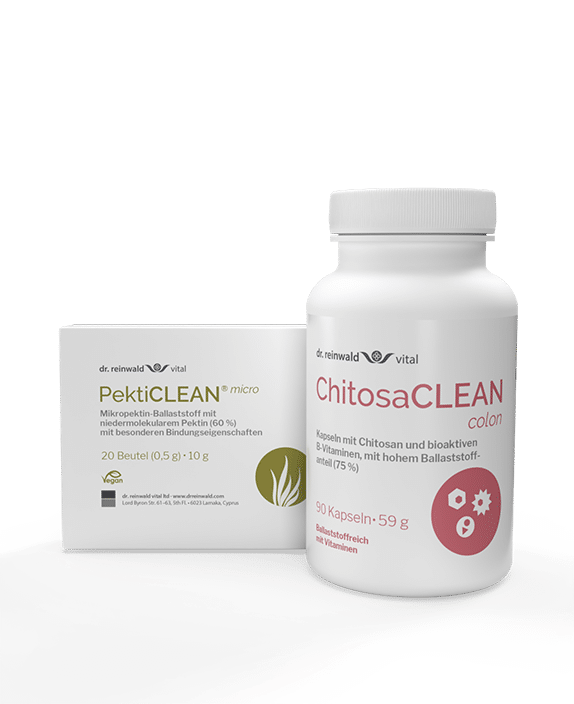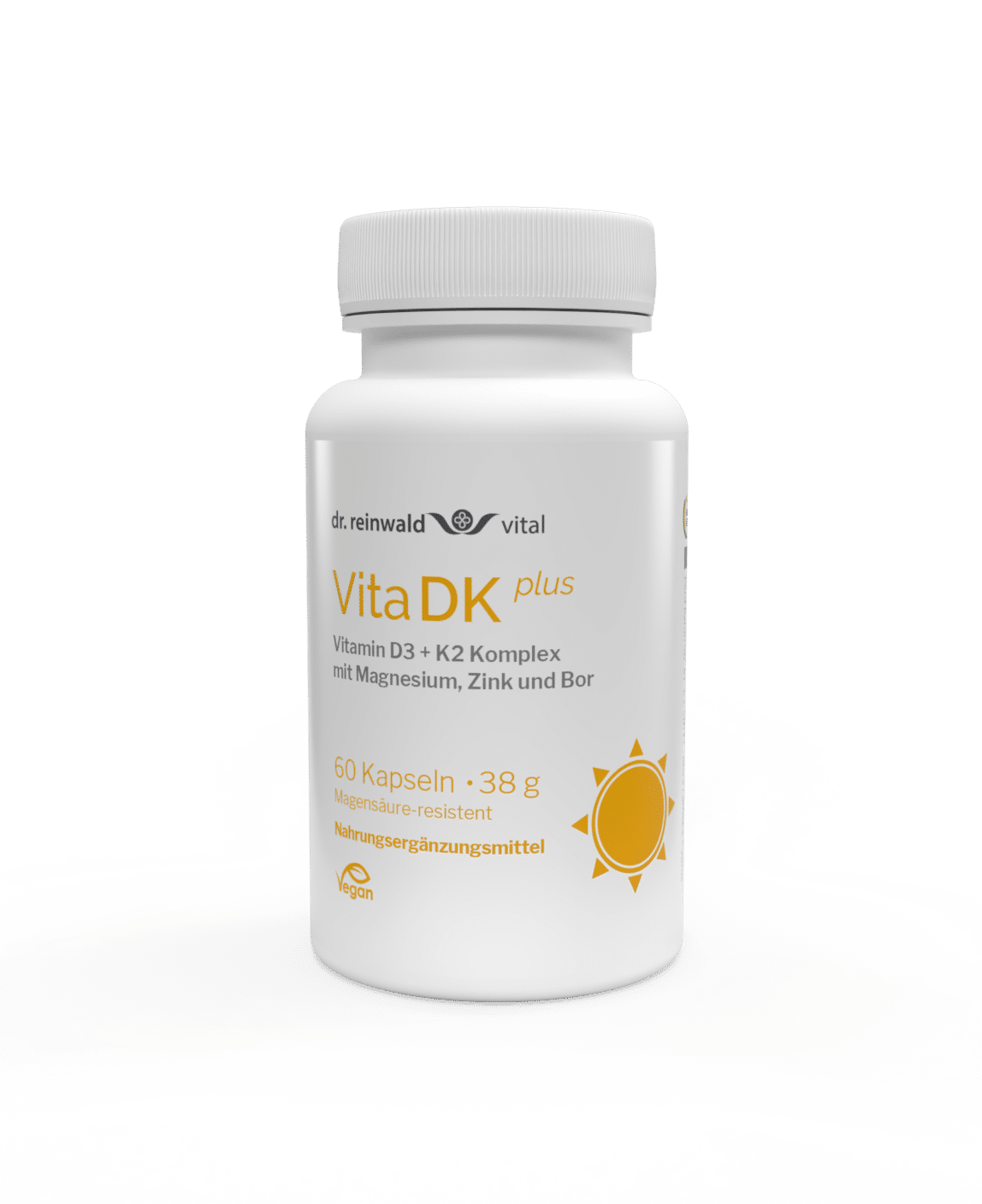Enzymes: the workers in our body
Enzymes control all metabolic processes in the human organism, from simple digestion to highly complex immune reactions. Enzymes are the work and life force of the human body. Regular consumption of enzymes and enzyme-rich foods is therefore considered a key to vibrant health, disease prevention and anti-aging. Already in the innate immune system of newborns, it is the enzymes and antibodies given by the mother that control further immune acquisition and defence. Enzymes enable our reproduction and are involved in regulating inflammation and wound healing. Every cell in our body requires enzymes for its biochemical functions. Accordingly, a lack of enzymes can accelerate the aging process and be the cause of health problems.
Digestive enzymes
During digestion, the body uses a variety of enzymes to break down macronutrients (proteins, fats and carbohydrates) into their smaller components. The proteins in food are splitten into individual amino acids or short chains of a few amino acids (oligopeptides) by protein-cleaving enzymes (proteases and peptidases) in the stomach and especially in the small intestine. These can then be absorbed through the intestinal wall.
Proline is an amino acid for which our body itself hardly has any cleavage enzymes. Proline is a component of gluten, the “glue protein” in cereal products, and is responsible for the fact that gluten cannot be simply digested and leads to gluten sensitivity and even chronic intestinal inflammation (coeliac disease) in many people. As a result of the inflammatory irritations, misdirected immune reactions to gluten can occur, so-called autoimmune reactions, which further trigger the symptoms.
The specialty of prolyl oligopeptidase is the cleavage of particularly resistant proline compounds with which foreign proteins, such as those found in viruses and bacteria but also in almost indigestible gluten, protect themselves from the body’s own defenses and digestion.
Prolyl oligopeptidases cleave proline
Gastrointestinal proteases produced by the human organism, such as pepsin in the stomach or trypsin and chymotrypsin in the small intestine, which serve to digest proteins, are not able to break down dietary proteins with a high proline content, such as the hard-to-digest prolamine compounds in cereals. Gluten, which is also referred to as “glue” or “glue protein”, has viscoplastic properties that, from the bread industry’s point of view, increase the slice resistance and thus the technological quality of bread. For this reason, cereals such as wheat and rye in particular have been deliberately bred for a high gluten content. This has led to more and more consumers seeking ways to a low gluten diet.
Prolyl oligopeptidases can also crack stubborn peptides or prolamins as they specialize in cleaving such proline compounds. On the one hand, cereals produce prolamines, which are hard to cleave, and on the other hand, amylase-trypsin inhibitors, which inhibit the digestion of sugars and proteins by enzymes in the small intestine. And why are they doing this? Quite simply: to ward off predators. In contrast to apples, which are looking to be eaten by humans and animals because of the wider distribution of their seeds, wheat sees us as parasites or enemies and tries to make life difficult for us in the truest sense of the word by producing defence substances against predators. Among other things, prolamin peptides are responsible for gluten sensitivity, gluten intolerance and even severe diseases of the small intestine such as coeliac disease. The industry has therefore long used such prolyl oligopeptidases to produce foods such as gluten-free beer and gluten-free baked goods.
Coeliac disease & gluten intolerance
Coeliac disease affects about eighty million people worldwide. This inflammatory disease of the small intestine is a lifelong major burden and is even hereditary. Coeliac disease is triggered by the ingestion of wheat gluten, respectively gliadin and similar peptides from other grains such as barley (hordein), rye (sekalin) or corn (zein). As “glue protein”, gluten is also responsible for the popular baking properties of grain. Gluten is the general name that summarises the family of these prolamine glycopeptides. They are all characterised above all by a high proportion of the amino acids proline and glutamine, whereby the former is very difficult to metabolise and is also immunoreactive and attacks the epithelium of the small intestine.
In terms of tissue profile, coeliac disease is characterised by a flattening of the villi of the small intestine and larger depressions in the intestinal mucosa, in addition to often creeping inflammation. These lead to a loss of resorption surface area during food intake. This very often results in malabsorption of nutrients, vitamins and minerals and entails an increased risk of a number of multiple diseases. The patient virtually “starves” while eating. However, not only the degenerative form of coeliac disease, but also the milder forms of gluten sensitivity or gluten intolerance can cause symptoms such as diarrhoea, abdominal pain or flatulence and fatigue. Since the actual coeliac condition is often not detected diagnostically, with a view to gluten intolerance, there remains a high number of unidentified cases that are creeping along.
Gluten free diet
The central and globally recognised therapeutic cornerstone for ailments caused by cereal prolamines is a strict gluten-free diet. It is considered the only effective measure to treat coeliac disease and improve its accompanying comorbidities. The gluten-free ketogenic diet, as developed by Dr. Reinwald in his protocol, is very suitable as a basic dietary measure for a gluten-free diet. However, a diet alone is not always effective, as many people react violently to even the smallest amounts of these immune-reactive and inflammation-producing prolamins, which are also contained in many other products such as lipsticks, medicines, soft drinks, condiments or even nasal sprays. Prolyl oligopeptidases such as those contained in ProZYM plus can optimally complement a gluten-free diet and at the same time serve as a preventive for better utilisation and cleavage of the prolamines in grains as well as from other products containing gluten.
Notes on ProZYM plus
For a specific reason, we have chosen an enteric encapsulation. We want as much prolyl oligopeptase as possible to unfold in the small intestine in order to enhance the systemic effect. It is in the nature of prolyl oligopeptidase not only to degrade stressful proline compounds in the small intestine, but also systemically in the entire organism, as in the enzyme’s contribution to supporting the immune defence via the above-mentioned RAAS mechanism, but also directly in the tissues or in the blood. Therefore, we point out that prolyl oligopeptidase, due to its proteolytic function, also has blood liquefying properties and can enhance the effect of blood-thinning and anticoagulant drugs.
Together with the enzymes serrapeptase and nattokinase, they make an ideal team, as the other serine proteases tend to target larger peptide structures, while prolyl oligopeptidases have their cleavage efficiency on the smaller proline-containing peptides. It’s a bit like crushing stones: first we produce gravel, then grit and finally stone powder.
Holy Thistle as a co-faktor
The holy thistle is a useful and household remedy plant that has been known for thousands of years. It was only with the onset of industrialisation it increasingly has been regarded as a weed, standing in the way of modern, high-tech agriculture and competing for water and nutrients with many of the more common and far unhealthier crops. The spiny plant contains high levels of bitter compounds. Like the dandelion, it belongs to the daisy family (Asteraceae). And like the dandelion, it is traditionally known as a liver-protecting plant.
In the vernacular of various regions, holy thistle is also called blessed thistle, lady’s thistle or Mary thistle. The common reference in Christianity to Mary’s “milk”, as made even clearer in its English name as milk thistle, refers to a legend according to which the white veins running through the leaves of the plant were formed by a drop of milk from the breast of Jesus’ mother. Until modern times, holy thistle was grown primarily as a source of food. The roots can be eaten as a vegetable after sufficient watering and reduction of the bitter substances. The perianths are prepared like artichokes, hence the common French name Artichaut sauvage (wild artichoke). The peeled stalks were used as a kind of asparagus salad and the leaves (without spines, of course) as salad greens or herbs. Even the roasted fruits were brewed as a substitute for coffee or mixed with sea salt as a spice.12 The plant was also used to feed livestock. In parts of England and Scotland the leaves were used extensively as fodder for cattle and horses.
Holy thistle is a superfood
However, holy milk thistle was not only an important source of nutrition. Ancient documents show that milk thistle was already used as a “healing plant” in the Mediterranean region about 2000 years ago. It was mainly used for its strong liver protection in cases of poisoning. Theophrastus of Eresos (ca. 371-287 BC), a Greek natural philosopher and important student of Aristotle, was the first to identify the plant by name. He called it Ptérnix in reference to the straight stem of the plant, which can grow very high in the Mediterranean countries.
Dioscorides, a Greek physician from the 1st century AD, gave the botanical name Sillybon, which is still used today. In his Materia Medica, he recommended it against snakebites and other forms of poisoning. Pliny the Elder, a Roman administrator and polymath, describes in his Encyclopaedia of Natural History the juice of the plant mixed with honey as a remedy for improving bile secretion. Today we would call it the liver-bile-intestinal functional circuit or enterohepatic circuit.
Pliny was the first to pass down the Latin name Silybum. However, it was not until the Christian Middle Ages that the plant was given the name Mary’s thistle, which is still in use today, and which was then incorporated into the botanical name Silybum marianum or, synonymously, Carduus marianum. Historical references can be found in the various herbal books of the Middle Ages, including the recommendation of John Gerard (1545-1612) to drive away melancholy and “black bile” as well as the use of roots, herbs and leaves of this plant for various ailments associated with a flagging liver.
Ingredients of milk thistle
Milk thistle contains a variety of secondary plant substances, the effects of which have not yet been fully researched. The best known is silymarin: a polyphenolic flavonolignan complex of seven closely related substances: silybin A and B, isosilybin A and B, silychristin, isosilychristin and silydianin, and the flavonoid taxifolin. In addition, the plant contains other flavonoids such as quercetin (from Latin quercus for oak), dihydrokaempferol, kaempferol and apigenin. In addition, there are phytosterols and tocopherols (vitamin E) as well as fatty oil with up to approx. 30%. The milk thistle therefore has a high proportion of linoleic acid (approx. 60 %), oleic acid (approx. 30 %) and palmitic acid (7-9 %). Other ingredients in milk thistle were only recently discovered, which underline their importance as a superfood: the lanostane triterpene marianine and triterpene glycosides, the so-called marianosides A and B. Triterpenes play an important role in overcoming infections, among other things.3
Nutritional science now recognises that milk thistle can support the liver in a healthy way. Its effects are based on three pillars: stabilisation of the liver cell membrane, antioxidant effect, support of liver cell regeneration.
Interestingly, flavonoids such as apigenin, which are also found in numerous olive varieties or Tunisian white broom and many other plants, not just in milk thistle, show many health-supporting properties, which would explain the immune-boosting results of many plants.
*PPI (Protease Picomole International): indicates the enzyme activity
References:
1 Leung AY and Foster S. Encyclopedia of Common Natural Ingredients Used in Food, Drugs & Cosmetic. John Wiley & Sons. 3. Auflage, S. 439-441.
2 Karkanis, Anestis et al: Cultivation of Milk Thistle (Silybum Marianum L. Gaertn.), a Medicinal Weed. Industrial Crops and Products 34, Nr. 1 (2011): 825–30.
3 Bäumler, Siegfried: Heilpflanzenpraxis heute – Arzneipflanzenporträts. Urban & Fischer Verlag/Elsevier GmbH; 3. Edition (2021).
without GMO
without animal testing
without additives
without pesticides
without soy
immune system
blood circulation
liver
